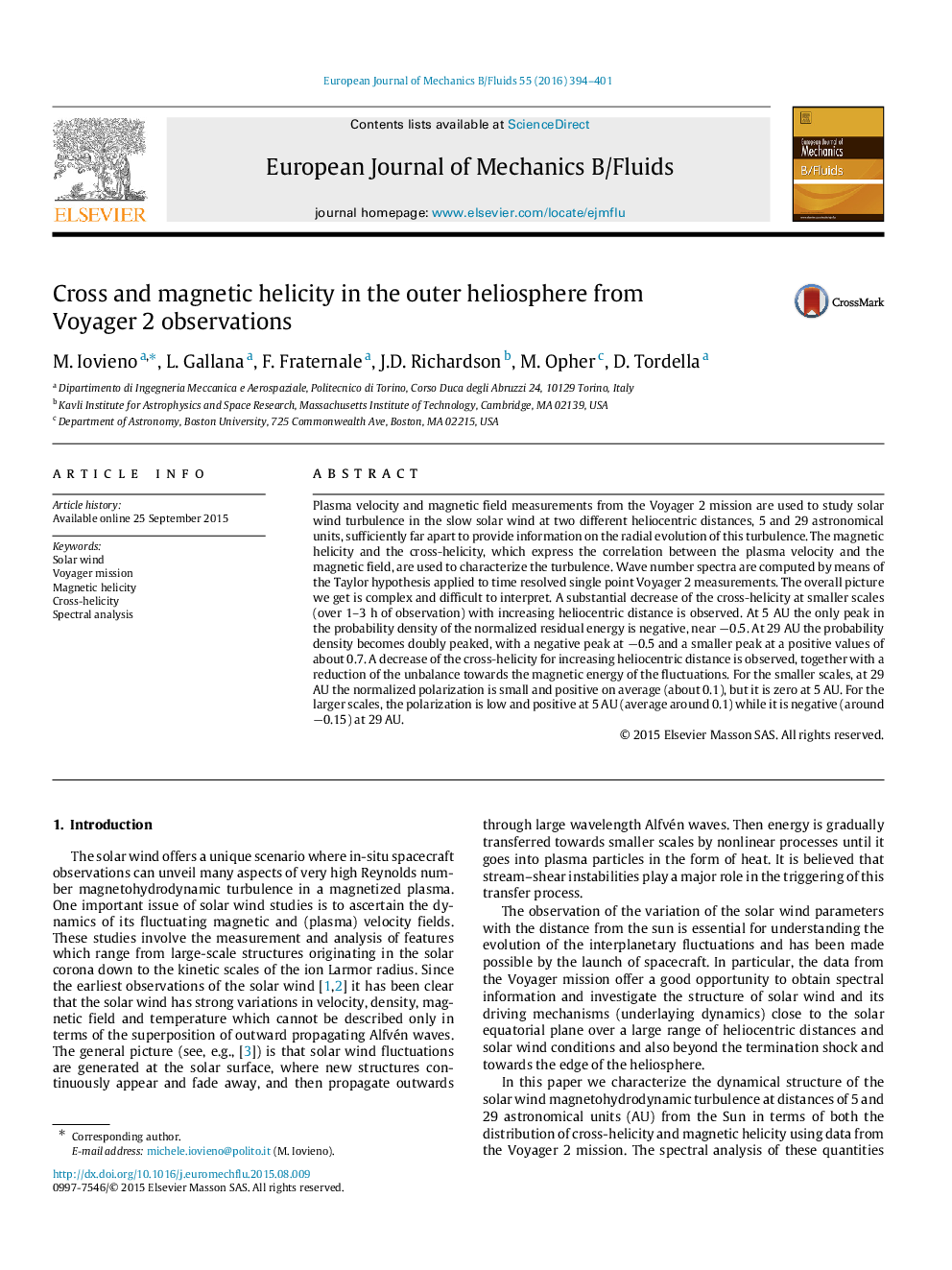| Article ID | Journal | Published Year | Pages | File Type |
|---|---|---|---|---|
| 7051292 | European Journal of Mechanics - B/Fluids | 2016 | 8 Pages |
Abstract
Plasma velocity and magnetic field measurements from the Voyager 2 mission are used to study solar wind turbulence in the slow solar wind at two different heliocentric distances, 5 and 29 astronomical units, sufficiently far apart to provide information on the radial evolution of this turbulence. The magnetic helicity and the cross-helicity, which express the correlation between the plasma velocity and the magnetic field, are used to characterize the turbulence. Wave number spectra are computed by means of the Taylor hypothesis applied to time resolved single point Voyager 2 measurements. The overall picture we get is complex and difficult to interpret. A substantial decrease of the cross-helicity at smaller scales (over 1-3 h of observation) with increasing heliocentric distance is observed. At 5 AU the only peak in the probability density of the normalized residual energy is negative, near â0.5. At 29 AU the probability density becomes doubly peaked, with a negative peak at â0.5 and a smaller peak at a positive values of about 0.7. A decrease of the cross-helicity for increasing heliocentric distance is observed, together with a reduction of the unbalance towards the magnetic energy of the fluctuations. For the smaller scales, at 29 AU the normalized polarization is small and positive on average (about 0.1), but it is zero at 5 AU. For the larger scales, the polarization is low and positive at 5 AU (average around 0.1) while it is negative (around â0.15) at 29 AU.
Related Topics
Physical Sciences and Engineering
Chemical Engineering
Fluid Flow and Transfer Processes
Authors
M. Iovieno, L. Gallana, F. Fraternale, J.D. Richardson, M. Opher, D. Tordella,
